
Book Review | The Darth Bane Trilogy
| Path of Destruction | Rule of Two | Dynasty of Evil | |
|---|---|---|---|
| Author: | Drew Karpyshyn | ||
| Publisher: | Del Rey | ||
| Length: | 324 pages | 318 pages | 296 pages |
| EE Critic Score: | 6/10 | 8/10 | 7/10 |
The Darth Bane Trilogy is a series of three books (Path of Darkness, Rule of Two, and Dynasty of Evil) written by Drew Karpyshyn. They tell the story of Darth Bane, the Sith Lord who created the exclusive, secretive Sith order that eventually produced Darth Sidious and his apprentices. The novels serve as a bridge between the Galaxy as depicted in Old Republic-era stories and as depicted in Prequel-era stories. The books serve as one of the closest looks at the Sith in Star Wars, and they have been an influence on later works concerning the Sith in both Legends and Canon. The Darth Bane Trilogy was originally published quickly after the release of Revenge of the Sith and was recently re-released as part of the Essential Legends Collection.
Synopsis
Path of Destruction
The first book opens on Apatros, a mining colony run "16-tons" style to produce cortosis ore for use armoring the Republic military. The Republic and its Jedi allies are engaged in a Galaxy-spanning war against the Brotherhood of Darkness, a nominally democratic organization of Sith founded by the fallen Jedi Skere Kaan.
The story focusses on Dessel, a hulking young man whose abusive father has recently died of a heart attack, leaving his son a massive debt to the mine as an inheritance. Dessel gets in a fight with another miner, subsequently getting suspended from his job. Still accumulating debt living the company town, Dessel decides to spend his free time playing sabacc in the local cantina. He has an inborn talent for predicting the immediate future, which gives him an advantage in the game. At the cantina he encounters a group of Republic officers, whom he consistently beats at sabacc, angering one of the officers. Dessel goads the officer, knowing that an angry player is a sloppy player. Eventually, the officer snaps at Dessel, loudly insulting both him and the people of Apatros more generally. The bartender ejects the officers from the cantina.
Later, when heading home, Dessel is jumped by the officers. His precognition saves him from the initial ambush, and he kills the angry officer; the others run off. Dessel goes back into the cantina. The bartender tells him that the mining company will sacrifice Dessel to maintain good relations with the Republic, regardless of who attacked who. He offers Dessel a way off-world, and away from the Republic, by joining the Sith military.
Dessel joins up, fights in and survives many battles, eventually becoming a sergeant in a unit known as the Gloom Walkers. His precognitive abilities eventually attract the attention of the Sith lords. After his commander delivers orders that Dessel believes will result in a Sith defeat and, likely the Gloom Walker's deaths, Dessel leads a mutiny. He secures a Sith victory, but his commander has him taken into custody. Rather than face execution, however, Dessel is taken by a Sith lord to Korriban, site of the Sith Academy led by Lord Qordis. Dessel is offered a chance to learn the ways of the Force, which he accepts. Rejecting his old life, he takes a new name: Bane.
Bane's raw talent in the Force makes him a gifted student at the Academy, until, in a practice duel he uses the Force to kill another student. The shock of the killing mixed with the realization that he had also unwittingly induced his father's heart attack hampers Bane's connection to the Force, and he quickly starts to fall behind the other students. Lord Qordis declares that Bane must either resolve the issue himself or else fail, and that no instructors are to waste their time trying to help him. The other students start treating Bane contemptuously.
Bane does have two allies. One is a fellow student, a Jedi turncoat named Githany. She hopes to enthrall Bane in order to use him against the Academy's top student, Sirak. She and Bane spend much time together in the Academy archives. Bane also approaches Lord Ka'Sim, the lightsaber instructor, to be taught in secret. Bane steadily regains and surpasses his former power. He challenges Sirak to a practice duel, and wins. Qordis commends Bane on his victory while also telling him to keep out of the archives, as they hold only the works of old Sith whose ideals contradict the modern Sith unity brough about by Lord Kaan. Bane says that Lord Kaan and the Brotherhood are a betrayal of true Sith teachings, at which point Qordis expels Bane from the Academy, telling him to learn what he can from the ancient Sith tombs nearby, and thus, in Qordis's mind, sending Bane to his death.
Bane travels to the tombs, finding them thoroughly looted and full of vicious monsters. He realizes that there is nothing left to truly teach him on Korriban. Qordis is surprised when Bane returns, professing repentance and pledging himself to the Brotherhood. Githany welcomes Bane's return. She arranges another confrontation between Bane and Sirak, this time not a practice duel, but a real one. Bane is victorious, subduing Sirak, then beheading him when he begs for mercy. He realizes that Githany was only using him, but rather than be angry with her, he is impressed by her guile.
The war begins to focus on the world of Ruusan. Lord Hoth, a great Jedi general, has broken away from the Republic military and has formed his own "Army of Light", an all-Jedi host that overwhelms the Sith military. Lord Kaan, in response, similarly recalls the Sith lords leading his armies to form a force to counter Hoth. The two forces meat at Ruusan, where ensues a stalemate. The war grinds on there, and Kaan slowly begins to lose. He sends word to Qordis requesting that all academy students be declared Dark Lords so that they can join the fight at Ruusan.
Just before the departure, Bane slips away, travelling to the home-world of the Rakata, a now-long-dead people who had once enslaved much of the Galaxy through the power of the Dark Side. There he finds a holocron made by Darth Revan, a Sith Lord who reigned several thousand years ago. Revan's recorded teachings say that no Sith should teach more than one apprentice at a time, among other things. Bane comes to believe that the Sith are weak because they are too numerous. They tried too hard to emulate the structure of the Jedi, who supplemented their power in the Force with political influence and military leadership. Kaan seeks the same things, but Bane thinks the Sith should instead focus on improving their connection to the Force directly. This would best be done by a singer person. Considering that a single Sith would eventually die, Bane decides that there should be exactly two Sith: a master to "embody the power" of the Dark Side, and an apprentice to "crave" that power. The apprentice would have to surpass their master in order to claim the title, thus the infighting that usually led to Sith downfall, the weakness that Kaan's Brotherhood sought to suppress, would instead become the Sith's strength, as each successive generation grew in power.
To establish his Rule of Two, Bane must first purge away the Brotherhood. He gets a start when Kaan sends Ka'sim after him. Bane kills his former teacher, then sends a message to Lord Kaan feigning regret over the act and promising to share ancient secrets he's uncovered to help defeat the Jedi. Kaan agrees to take Bane back into the Brotherhood, but he becomes concerned that Bane means to take control, and so sends Githany to kill him. Githany nearly does so with a poisoned kiss; Bane only survives thanks to the work of a healer, Caleb of Ambria, whose daughter Bane threatens to ensure his compliance. Once again, he is more impressed by Githany's guile than upset with her for attacking him. He considers sparing her and making her his apprentice.
Bane arrives on Ruusan, and initially makes good on his word to bring new Force techniques against the Jedi. He guides the Sith in creating a great storm of Force lightning to burn Hoth out of his forest stronghold. He confronts Kaan, accusing him of trying to fight as a general rather than as a Sith lord. As the Jedi regroup, Bane goes behind Kaan's back to order the orbiting Sith fleet to engage with Republic ships, breaking the blockade that had kept Jedi reinforcements, led by Lord Valenthyne Farfalla, from joining Hoth on the surface. Finding himself outnumbered by Hoth and Farfalla's combined forces, Kaan, in desperation, gathers the Sith lords in a cave to conjure another of Bane's Force weapons: a Thought Bomb. This is usually a suicide attack, but Kaan believes the combined power of all the gathered Sith lords will be enough to protect them from the blast. Not all the Sith join, however. Bane had provided the Thought Bomb to trap the Brotherhood into destroying themselves, and so he has deserted them. Another lord loses confidence in Kaan; believing the Thought Bomb to be a worse fate than a lightsaber, he trades Farfalla a warning of Kaan's plan for a quick death. Githany realizes what's happening and leaves midway through the ritual.
Warned of the Thought Bomb, Hoth gathers a force of a hundred Jedi volunteers to confront Kaan, sending the rest, led by Farfalla, in a retreat to safety. Hoth finds Kaan in the cave, and Kaan detonates the Thought Bomb. The bodies of all the Brotherhood (including Githany, who couldn't get away in time) and of the hundred Jedi are destroyed, while their souls are sucked into a vortex and trapped in the cave.
After the battle, Bane finds a young girl who, in a fit of rage toward some Jedi who had panickily killed a creature that had been her companion, had snapped their necks with the Force. Bane takes her as his apprentice, Darth Zannah.
Rule of Two
The second book is mostly set ten years after the first, though a prologue follows directly from Path of Destruction's epilogue: Bana and Zannah find the souls trapped by the Thought Bomb, then they come across some mercenaries looting the Sith camp. Bane kills all but two of the mercs; he explains to Zannah that the Sith must live and work in secret until the Jedi are destroyed, but that they can't keep absolutely secret, so they should keep rumors of their existence alive on the tongues of unreliable witnesses, where they'll be least likely to be believed.
Zannah's cousin, Davorit, who, like her, was brought to Ruusan as a Jedi initiate before briefly defecting to the Sith, finds her and, thinking Bane is her captor, attacks the Dark Lord. Before Bane can kill the boy, Zannah uses the Force to obliterate Davorit's right arm. The Sith leave the boy maimed in the caves.
Bane tells Zannah that he is going to Onderon; her first task, to prove herself worthy to be his apprentice, will be to find her own way there to meet him in ten days time.
Up in orbit, Johun Otune, padawan of the late Lord Hoth, begs Lord Farfalla for permission to join in the relief efforts. Given the unknown residual effects of the Thought Bomb, Farfalla is disinclined to send down any Force-sensitive people. Johun sneaks aboard a shuttle anyway. He and the group encounter the two spared mercenaries, who tell of a Sith lord who escaped the blast. Johun brings the mercenaries back to Farfalla, who dismisses their claims and rebukes Johun for stowing away. Farfalla says Johun shouldn't be left on his own, and so takes him as his own apprentice. Meanwhile, the shuttle party Johun had taken discovers Zannah. Pitying her as a war orphan, they take her aboard, only for her to kill them all and take their shuttle to Onderon.
On Dxun, the dragon-filled moon of Onderon which regularly passes close enough to the planet that the two bodies' atmospheres merge, Bane finds the tomb of Freedon Nadd, an ancient Sith. He finds Nadd's holocron in a chamber filled with orbalisks, insectoid creatures that feet on the Dark Side. The orbalisks embed themselves in Bane's torso. The holocron explains that the creatures cause constant pain but also provide healing, protection against lightsaber blades, and an increased connection to the Force. Ban leaves the tomb, encounters a dragon, uses the Force to tame it, and rides it through the merged skies down to Onderon, where he finds Zannah.
Farfalla and Johun meet with Republic Chancellor Tarsus Valorum, who announces a plan to disband the Army of Light and to subordinate future Jedi action to approval by the Senate. Johun is upset by this but Farfalla, who is old enough to remember times of peace, readily agrees to these "Ruusan Reformation". He tells Johun that the Padawan has been through enough during the war to merit being knighted. He also assigns Johun to the Chancellor's security detail, so that he might learn of ways to lead besides as a general.
After the ten-year jump we find Darth Bane, now almost completely engulfed by his orbalisk armor, struggling to make his own holocron, so that his teachings can be faithfully passed down through generations of Sith. He lacks the knowledge of how to bring the device together properly, and, after a failed attempt to do so results in the destruction of years of careful work, Bane gives in to an orbalisk-fueled rage and demolishes his and Zannah's home. Zannah takes the opportunity to suggest Bane find a way to remove the orbalisks, feigning concern for his wellbeing but truly worried that the orbalisks have made Bane too powerful for her to ever hope to kill. Even without them, he's a more brutal fighter; Zannah is a relatively small woman, physically no match for her giant of a master. Her dueling style focusses on deflection and evasion, and her gifts in the Force tend toward Sith sorcery, a significantly more extreme form of Jedi mind trickery. Using sorcery on Bane is out of the question, as he'd know what she was doing before she could finish.
Bane sends Zannah to Serenno, a world with a significant anti-Republic faction, to goad an insurgency into an attempt to kidnap Chancellor Valorum. The attempt fails, foiled by Johun Otune, but the Sith have succeeded in sowing discord in the Republic. Zannah discovers that the man behind the anti-Republic group is a Serennian noble with a weak connection to the Force and a collection of Sith artifacts. She lures him to Bane, who kills him, but then, in another orbalisk-induced rage, attacks Zannah as well. Zannah holds Bane off long enough for him to calm down, as she tells him the noble had a lead on how to make holocrons. Bane goes to follow the lead, travelling to the Deep Core world of Tython, the birthplace of the Jedi, and later the Dark Jedi who became the Sith. While he is away, he sends Zannah to disguise herself as a padawan and search the Jedi archives for a way to remove the orbalisks, which he now views as more of a liability than an asset.
While overseeing the construction of a memorial to the hundred Jedi who sacrificed themselves on Ruusan, Johun Otune comes across Davorit, who has been sabotaging the construction. Davorit says it is not appropriate to honor the fallen Jedi since they did not destroy the Sith; one escaped and took his cousin as an apprentice. Johun, remembering the mercenaries' story of an escaped Sith lord, takes Davorit back to the Jedi Temple to speak with Farfalla. While there, Davorit discovers Zannah in the Archives. Zannah, worried about being discovered, takes Davorit with her and hurries to Tython to warn her master. Johun and Farfalla hear that Dovorit left suddenly with a young woman he called "Rain", the nickname he called his cousin by. Realizing that a Sith lord may indeed yet live, Farfalla traces Zannah's path to Tython, bringing Johun and two other Jedi warriors with him.
Bane has indeed found the secret to making a holocron on Tython by the time his apprentice arrives with Jedi in pursuit. The Sith slay the Jedi, though Bane is mortally wounded when his own lightning is turned back on him. Zannah takes him and Davorit to Ambria, where she finds Caleb and demands his aid. Caleb refuses, saying that since Bane last came to him he sent his daughter away, so that she could not be used as leverage again. Zannah convinces Caleb that if he heals Bane she will turn him over to the Jedi as the first step in her redemption from the Dark Side. Caleb treats Bane, removing the orbalisks in the process. Zannah sends a message to the Jedi that the Sith who killed Farfalla was injured and incapacitated on Ambria. Then she butchers Caleb and uses her sorcery to drive Davorit mad. When the Jedi arrive, Davorit attacks them and is cut down. Finding Caleb dead and the slain Jedi's lightsabers in Davorit's possession, they conclude that Davorit was the Sith lord, and return to Coruscant.
Dynasty of Evil
The third book opens after another ten-year time skip. Zannah is now roughly the same aga as Bane was when he took her as his apprentice, and Bane's body, ravaged by a combination of orbalisk venom, Dark Side energies, and poisoning from his days as a cortosis miner, is beginning to fail him; his hand trembles uncontrollably. Bane convinces himself that Zannah, rather than working to surpass his power, is simply waiting for him to weaken and die. Unwilling to let the role of Sith master pass on that way, and unable to find and train a new apprentice in the time he has left, Bane recalls the tale of Darth Andeddu, a Sith king who ruled a world for centuries. Andeddu was a Human, like Bane, and so he must have held some secret of long, even eternal, life. Bane resolves to find that secret.
To keep Zannah from finding out about his research, Bane sends her to investigate the death of a Jedi on the world of Doan. The Jedi had been sent to try to mediate a dispute between Doan's royal family and a group of miners, whose recent attempt to take the crown prince hostage to exchange for a lengthy list of workers' reforms accidentally resulted in the prince's death. The Jedi had secondarily been sent to take possession of some Sith artifacts that the miners had found. While the Jedi was meeting with the miners, an assassin arrived and killed the group.
The assassin was hired by the bodyguard of the prince's widow, a woman named Serra, who is, in fact, the daughter of Caleb of Ambria. Her devoted bodyguard is Lucia, a former member of the Gloom Walkers who had served with Bane during the war. She had hired the assassin to avenge her mistress on the people who had killer her husband; the death of the Jedi was incidental. Serra thanks Lucia for doing what the king wouldn't. Serra then travels to Coruscant to assure the Jedi that the king had nothing to do with the Jedi's death, though she conceals her knowledge of what really happened.
On Doan, Zannah finds out relatively little about the Jedi's death, but she does come across a Dark Jedi named Set Harth. He is a wealthy, indulgent figure who had come to Doan in search of the artifacts. Zannah wonders if Bane didn't truly send her to Doan in order to meet Harth, whom she recognizes as a potential apprentice; she would prefer to have her own student waiting in the wings before making a move against Bane. Harth is a free spirit, but Zannah believes the offer of great power will make him submit to her.
Bane again travels to the Deep Core, this time landing on the throneworld of Darth Andeddu. He discovers that Andeddu still has worshippers in his temple. Fighting past them, he discovers Andeddu's holocron, and, within it, Andeddu's secret. The ancient Sith had discovered a method of essence transfer. When he grew old, he simply found a new, younger body from among his cultists, and sent his soul into their body, overpowering the unfortunate cultist's essence with his own.
Serra is able to smooth things over with the Jedi. While at the Temple, she spots her father's name on a memorial to those killed by the last Sith on Tython and Ambria. She realizes that the Dark Man had returned as her father had feared. But the description of the slain Sith does not match her memory of the bald giant who had held her over a boiling pot. She realizes that the Dark Man is still out there. She asks Lucia to reconnect with the assassin she had hired, in order to enlist her help in tracking down and capturing Darth Bane. The assassin, a sadistic, Force-sensitive Iktochi woman known as the Huntress, meets Serra at her father's home on Ambria. Using her mental powers, the Huntress experiences the events of Caleb's death, seeing Bane and Zannah in a vision. Serra offers the Huntress triple pay to bring Bane to her alive and sedated. The Huntress ambushes Bane and brings him to the castle on Doan, while also stealing his lightsaber, his holocron, and Andeddu's holocron.
Zannah and Harth arrive at Bane's home shortly after, finding him missing. Harth recognizes the name Darth Andeddu, spoken by the illegal artifacts dealer whom Bane had met with before departing, or that of a Sith who sought eternal life. Zannah realizes that Bane, too, must be seeking immortality, breaking his own Rule of Two. Discovering signs of Doan involvement, they return to the mining world.
Bane is delivered to Serra in the abandoned royal dungeons of Doan, where he is kept drugged and paralyzed, as well as chained to the wall of his cell. Where Serra recognizes the Dark Man who threatened her as a child, Lucia recognizes Sergeant Dessel, who had saved her life during the war. Serra torments Bane with pain-inducing chemicals, reveling in watching him feel as scared and helpless as he had once made her feel. Lucia, both out of obligation to Dessel and out of concern for Serra, who isn't typically fond of torture, gives Bane an antidote for his chemical restraints, allowing him to recover and escape. Lucia asks that Bane spare Serra in exchange for his freedom. Bane refuses, and prepares to kill Lucia, before Lucia dies in a blast sent against Bane by Zannah, who has arrived furious at Bane for trying to cheat death and cheat her from rule over the Sith. They fight, Bane still without his lightsaber and dependent on throwing objects and bolts of Force lightning. Serra triggers a self-destruct of the dungeon. Zannah and Bane are separated by the falling rubble. Harth takes Andeddu's holocron and a shuttle off-world, abandoning Zannah. Bane escapes the collapsing dungeon and finds the Huntress waiting for him. She returns his lightsaber and holocron and asks to be his new apprentice. Bane agrees. The Huntress takes the name Darth Cognus, and the two go to Ambria to find Serra. There, Bane allows Cognus to kill her.
Zannah also escapes the dungeon. She realizes that Bane had goaded her into aggression in their duel, which is not her strength. When he sends her a challenge, she goes straight to Ambria to finish their fight. There, she assumes a defensive and deflective position. As Bane tires, Zannah works her sorcery to attack Bane with visions of monsters with his father's face, then more directly with tendrils of Dark Side energy. Disarmed and beaten, Bane initiates the essence transfer ritual, sending his soul into Zannah's body. Their two souls battle; Zannah's is stronger than Andeddu's thralls, and she overcomes Bane. As she rises, Darth Cognus approaches. Zannah accepts Cognus as her apprentice. Cognus notices a twitch in Zannah's hand, indicating some small part of Bane lived on in her.
Analysis
The character of Darth Bane was created by George Lucas as part of the backstory for The Phantom Menace. While his name did not appear in the final film, it did appear in the film's novelization:
But there would only be two at any one time. There would be no repetition of the mistakes of the old order, no struggle between Siths warring for power within the cult. Their common enemy was the Jedi, not each other. It was for their war with the Jedi they must save themselves. The Sith who reinvented the order called himself Darth Bane. A thousand years had passed since the Sith were believed destroyed, and the time they had waited for had come at last.
– from The Phantom Menace by Terry Brooks
From there he went on to feature in the limited comic series Jedi vs Sith (which first told of the Battle of Ruusan) and in a short story written by Kevin J. Anderson for Star Wars Gamer Magazine (which first told of his encounter with the orbalisks in Nadd's tomb).
Drew Karpyshyn is best known as a writer for video games; he wrote much of the scenarios and dialogue for Star Wars: Knights of the Old Republic, and was working on the Mass Effect series while writing these books. His background on KOTOR made him a reasonable pick to bring Darth Bane out of obscure corners of the Star Wars franchise and into a (comparatively) more mainstream novel.
Path of Destruction was not initially meant to be a part of a trilogy, but its success encouraged Del Rey to commission some follow-ups. PoD was largely a retelling of Jedi vs Sith, with additional scenes giving Bane a backstory. A few details changed (as always happened when two EU works told of the same events, and, indeed, as still tends to happen in the Canon era) but overall the Battle of Ruusan remains the same. Karpyshyn's original contribution is the first portion of the book, the story of Dessel and of Bane the Sith acolyte. These sections are decently told stories but I do thing that putting them together doesn't quite work. Dessel, the abused, disaffected miner with a scheming, thuggish mind and an unrealized gift in the Force is an excellent and unique starting point for a Sith lord character. And Bane, the maverick student who rejects his master's teachings in favor of more ancient wisdom found in Korriban's archives is a great way to bridge between the legions of Sith shown in the Old Republic era and the Rule of Two Sith shown in the films. But the book just doesn't make Dessel and Bane feel like the same character until Part 3. Dessel is smart, but he doesn't come off like a big reader. So when he's on Korriban and he's presented as this hapless, bookish nerd getting picked on by the other students and suckered into things by the Sith Academy equivalent of the hot cheerleader, there's a disconnect. Bane, before and after his academy days, is a person who intuits his way through life. He turns to holocrons to uncover lost teachings, but the way he applies those teachings is dependent on situational reasoning. At the Academy, the story stalls out into this evil high school drama paradoxically centered on a grown man embarking on his third career. It doesn't quite work as part of the larger whole.
After the Academy, Bane heads off to Lehon, in a sequence very similar to parts of KOTOR. From there, his poisoning by Githany leads into the adaptation of Jedi vs Sith, which provides the book with a strong finish. Path of Destruction is an interesting read, but I can't praise it as much more than that. It's only partially original, and that original part is inconsistent in its quality.
Rule of Two is the strongest of the three books. It also draws from Jedi vs Sith, as well as "Bane of the Sith", but it fits together more seamlessly than Path of Destruction does. Darth Bane remains a central character but he now shares focus with Darth Zannah. The contrast between Bane and Zannah carries this book and the next. Bane, particularly when colonized by his armor of orbalisks, is a great raging beast of a man. Zannah is, unlike many Sith lords, consistently described as a very ordinary-looking person. She isn't immediately threatening as she enters the room, but she is actually quite a bit more likely to kill people, despite her coolness of head.
Karpyshyn finally hits his stride in characterizing Bane in the second book. Bane is driven by a sort of pious fervor for his own philosophy, and his goal in life after Ruusan is seeing that the Sith are able to follow the Rule of Two in perpetuity. Bane is a long-term thinker and, very oddly for a Sith Lord, someone who sees himself as merely part of a greater whole. The whole ordeal with the orbalisks shows this. The creatures enhance Bane's strength in the Force, but at a cost that threatens Bane's ability to force a new Sith Order. He decides to give them up, even though doing so weakens him. His goal is not simply to accumulate as much power as possible before he dies, but also to ensure that power passes to a worthy heir.
The second book also features the Jedi transition from the autonomous, Galaxy-spanning society of warrior houses to the Republic-integrated, Coruscant-based Order that we saw in the Prequels. This shift is the root of the Jedi's downfall, as the subordination of the Order to the Senate is what led them to being made generals over the clone army that would slay them. It's thus possible to view the Ruusan Reformation as a tragic event. However, Karphyshyn does a good job showing how people at the time understood the changes, non-Jedi and Jedi alike, and how even though without them Order 66 couldn't have happened, there's a strong possibility that the Order might have fallen sooner due to extended war. (Indeed, Sidious had to do some maneuvering to get the Jedi back on battlefields.) Compared to the weary, bickering knights of Path of Destruction, the Jedi in Rule of Two are more clear-headed and centered, and thus easier to root for.
And you do root for them as a reader, even though those familiar with Star Wars know they will fail in stamping out the Sith. These books are not like Zahn's Thrawn Imperial trilogy; Bane and Zannah are unredeemable antiheroes. They don't have noble goals; they want to see the Galaxy burn to purge the weak. They aren't heroes in their own mind, but rather they believe heroism doesn't exist. Karpyshyn's ability to tell a compelling story about them is remarkable. I think it's mostly because, despite the way this story is the start of the tragedy of the Clone Wars, it's also the start of the final (ish) downfall of the Sith. We know that Bane's long game does not end the way he hopes; the Sith are forced into hiding for a thousand years, and as soon as they emerge, the Dark Lord is defeated and the Jedi re-emerge after a single generation.
Actually, things start to break down even withing Bane's time, which we see in the third book. Dynasty of Evil is the only of the three books not to have been adapted from any previous works. It's also the thinnest, plot-wise. I still think it's better than Path of Destruction, since it's a more consistent reading experience. But the whole book is just centered around a single event: the showdown between Bane and Zannah. It's clear what's going to happen in the end from the very beginning; the re-release puts the duel right on the cover. So everything leading up to it feels like filler, involved happenings of little consequence. Set Harth, especially, felt like he was only in this story to set up something else. (If that was the case, it seems little else materialized, although he did, apparently, master Darth Andeddu's techniques and use them to survive until the Yuzhann Vong War, according to sourcebooks for the Star Wars Tabletop RPG.) Darth Cognus, while not someone whose story was previously known, was technically an existing character, already named as the master of the once-not-humorously-named Darth Millennial (who broke the Rule of Two and founded the Prophets of the Dark Side, which you should look up if you want to uncover some real old-EU wackiness), and Karpyshyn took the opportunity to feature her in his story. Cognus gets little character development; I really wish she had gotten some of the attention that the red herring Harth did.
Strip away the padding, however, and you get a rather good conclusion to Bane's story. His youthful dreams of escaping his past are dashed. His pledge to sacrifice himself for the good of the Sith is broken and fulfilled all at once when he tries and fails to possess Zannah; faced with an apprentice capable of usurping him, he rationalizes an alternative scheme to become immortal. Even though his plan was to die one day, he couldn't stop himself from trying to put "one day" off indefinitely.
There was actually some fan debate about whether Bane actually did possess Zannah, given how she exhibited his hand tremors in the end. Karpyshyn has stated that Zannah was the victor, but that a part of Bane survived in her. This led to a fan theory that all of the Rule of Two Sith would partially possess their apprentices upon their deaths, an idea that was nodded to later in The Rise of Skywalker.
Serra works wall as an antagonist in the final chapter of Bane's story. She is his past come back to haunt him, and, like her father in previous books, is an interesting neutral party between the Jedi and the Sith. She prefigures the Rebel Alliance as a figure standing against the Sith in the absence of the Jedi, a sign that even when the Sith destroy the Jedi, they will still have formidable enemies. Her descent toward darkness in pursuing revenge on Bane works better than the similar storyline given to Lord Hoth in Path of Destruction, largely because Serra isn't a Jedi and as such doesn't necessarily know any better, so there's more of a narrative opening for her to fall with no one to stop her.
The Darth Bane Trilogy was recently featured as part of the "Essential Legends Collection" of EU novel re-releases. "Essential" is about the word I'd use to describe these books. They are the stories of the origins of the status quo that the films were set in. They are the stories of the Sith traditions that birthed Darth Sidious. They are thus key to understanding Star Wars in a couple of ways. But just as books I wouldn't call them my favorites of the saga. I'm glad to have read them; I'd even say Rule of Two is a pretty good Star Wars novel. But I could name several Star Wars books I enjoyed more. I think Karpyshyn did admirably in writing three books worth of story focused on an unrepentant, unsympathetic villain.
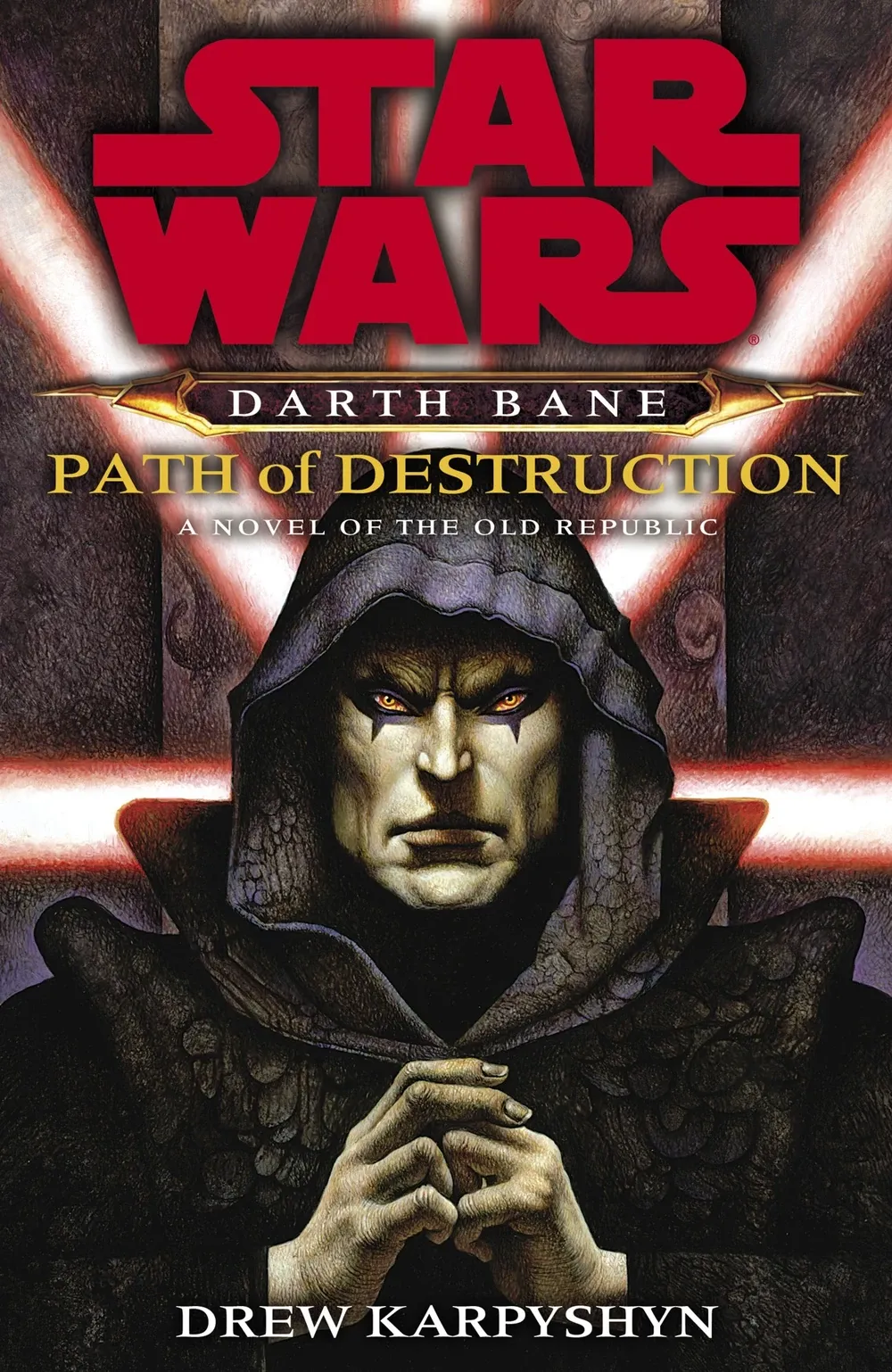
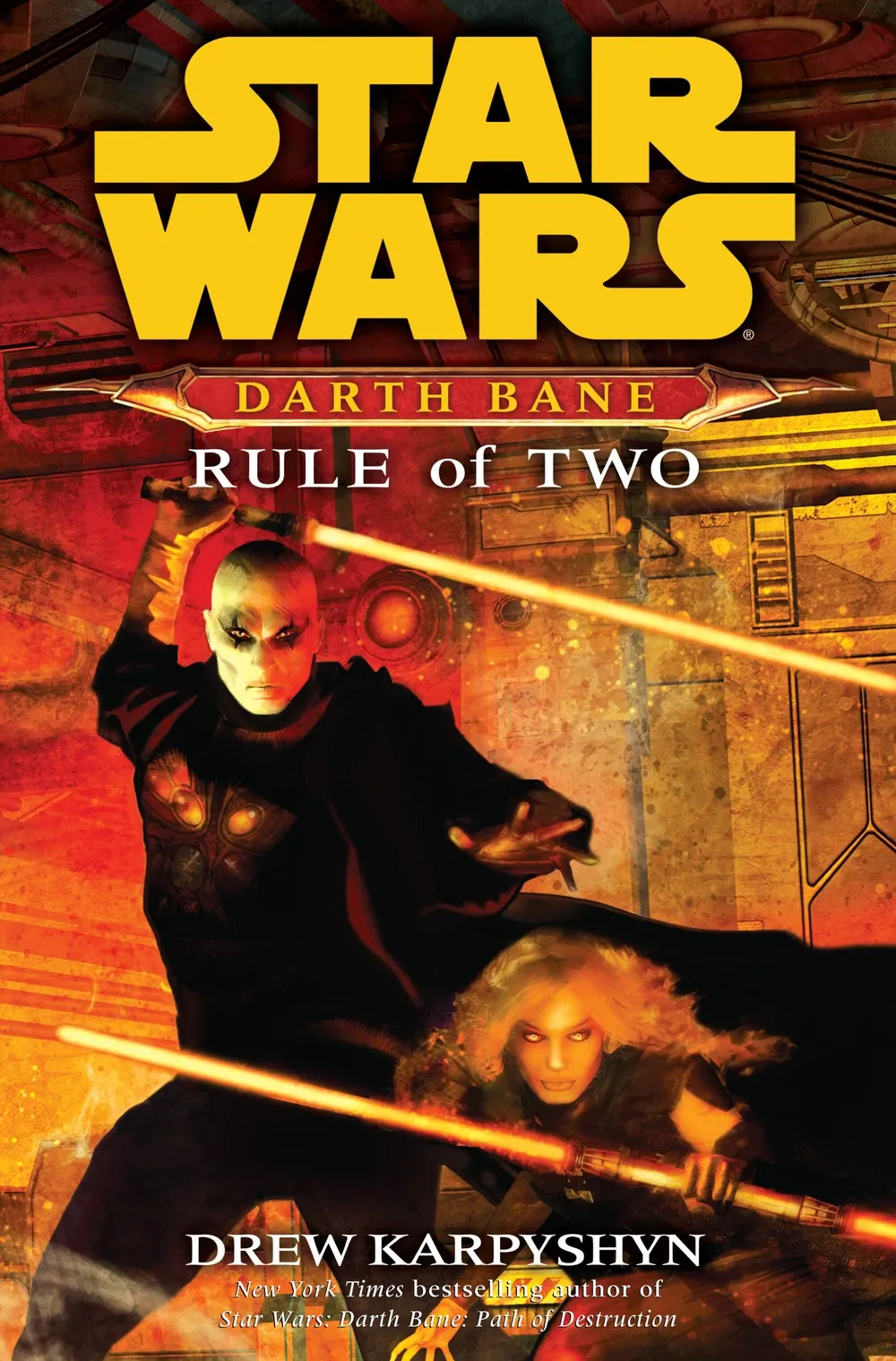
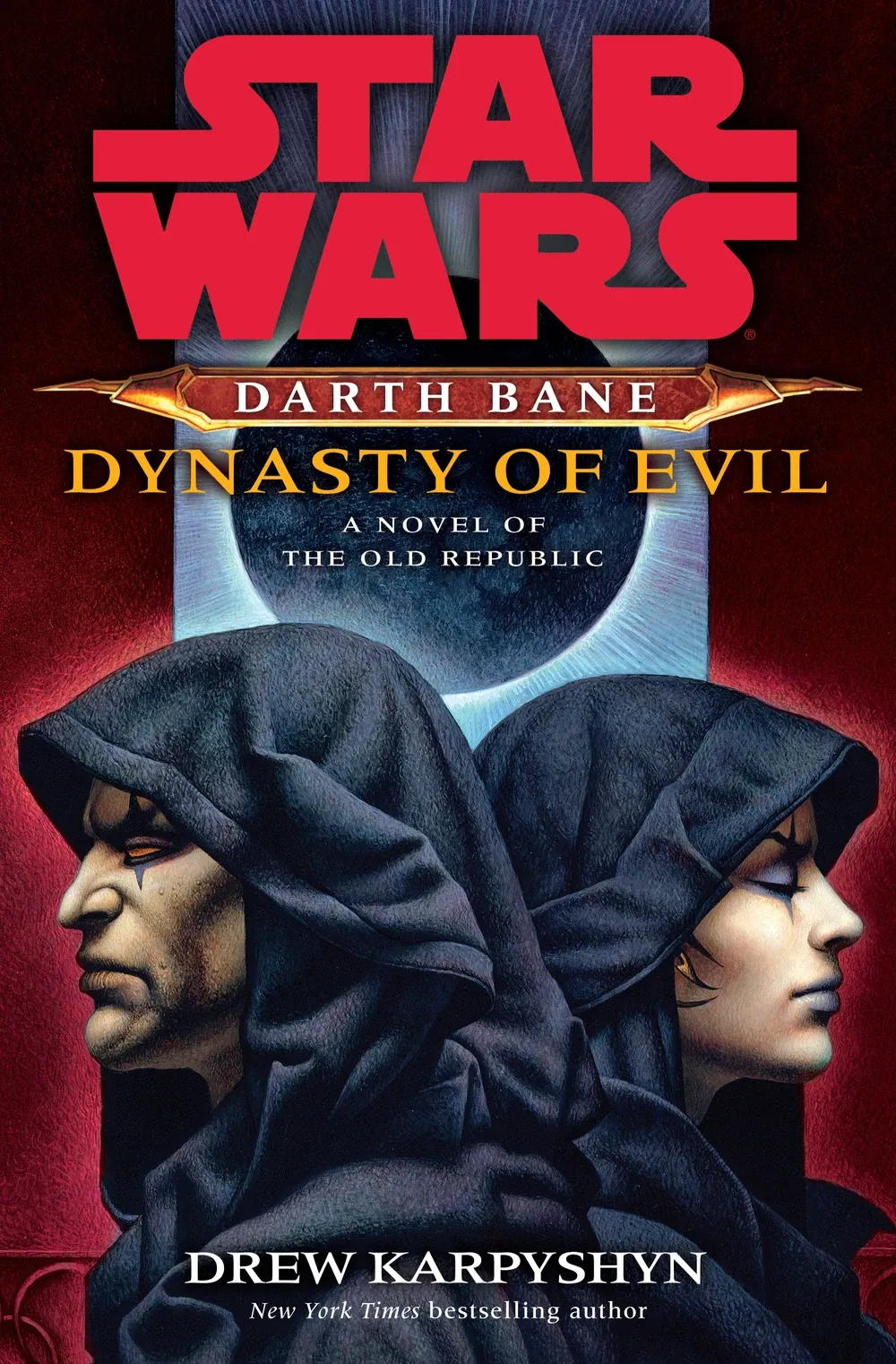
Original Covers for the Darth Bane Trilogy
A note about covers: Path of Destruction and Dynasty of Evil both have fine covers (though the markings shown around Bane and Zannah's eyes are a bit of a Dresden's hat, in that they aren't mentioned anywhere in the text and, given how Bane and Zannah are able to disguise themselves as Jedi or as ordinary citizens, might be read as explicitly contrary to the text in places). Rule of Two, however, frequently appears on lists of the worst Star Wars novel covers, and it's not hard to see why. Bane and Zannah's faces are blurred, and their bodies are weirdly positioned, their limbs looking out-of-proportion. The style looks like a still from an old video game. The cover art was done by John Van Fleet, who did a lot of illustration work for Star Wars, all of which is better than this. I've heard he wasn't given much time for this one. The other two covers were done by John Jude Palencar, who seems to have largely worked doing covers for reprints of speculative fiction novels, including the cover for the first formally published edition of Eragon; Palencar did no other illustration for Star Wars. Rule of Two also features yellow "Star Wars" text where the other two color "Star Wars" red. The overall effect makes the books look like an unmatched set, something which the "Essential Legens" re-release fixes by using artwork in the same distinct style by the same artist (the concept artist Simon Goinard) for all three books.
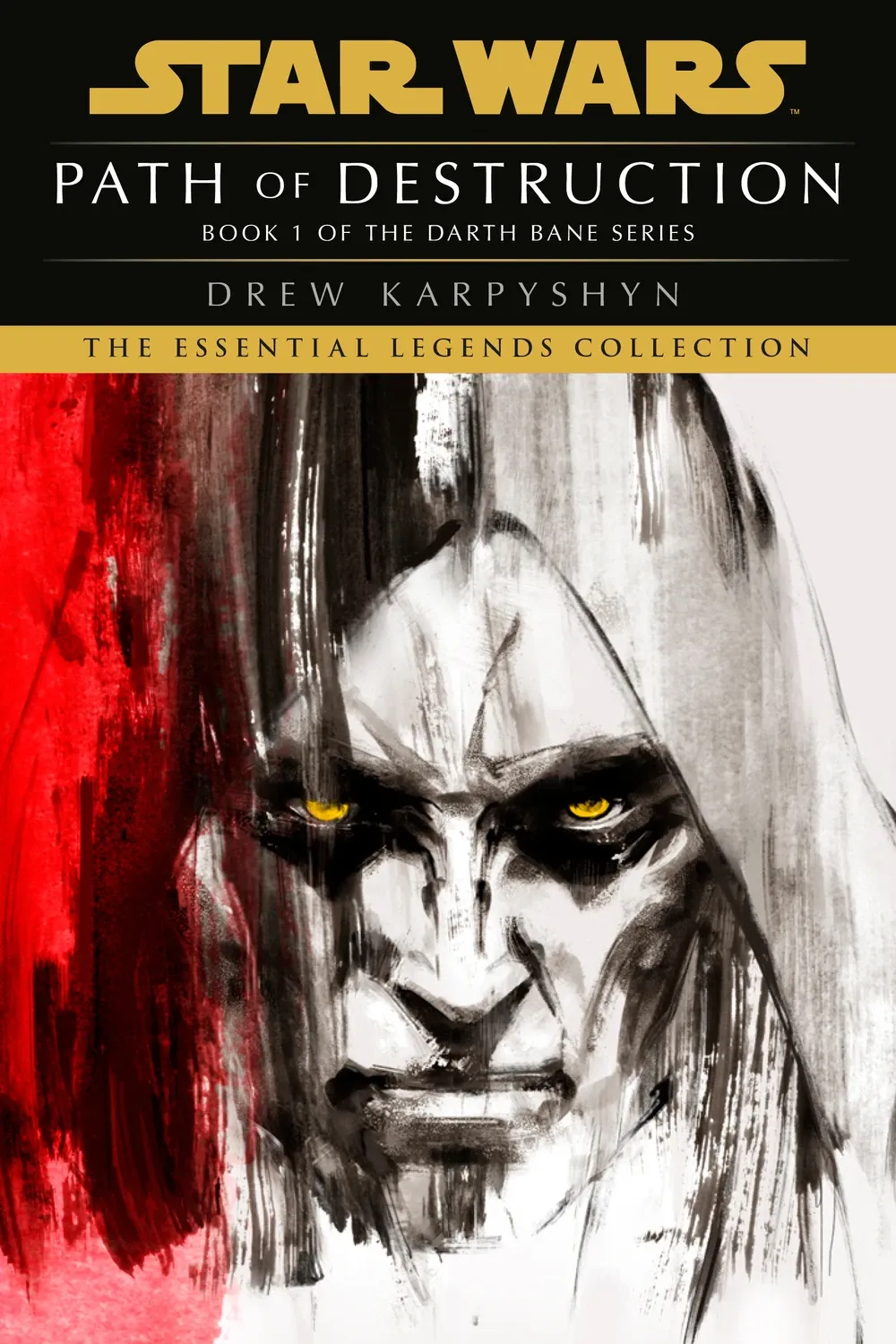
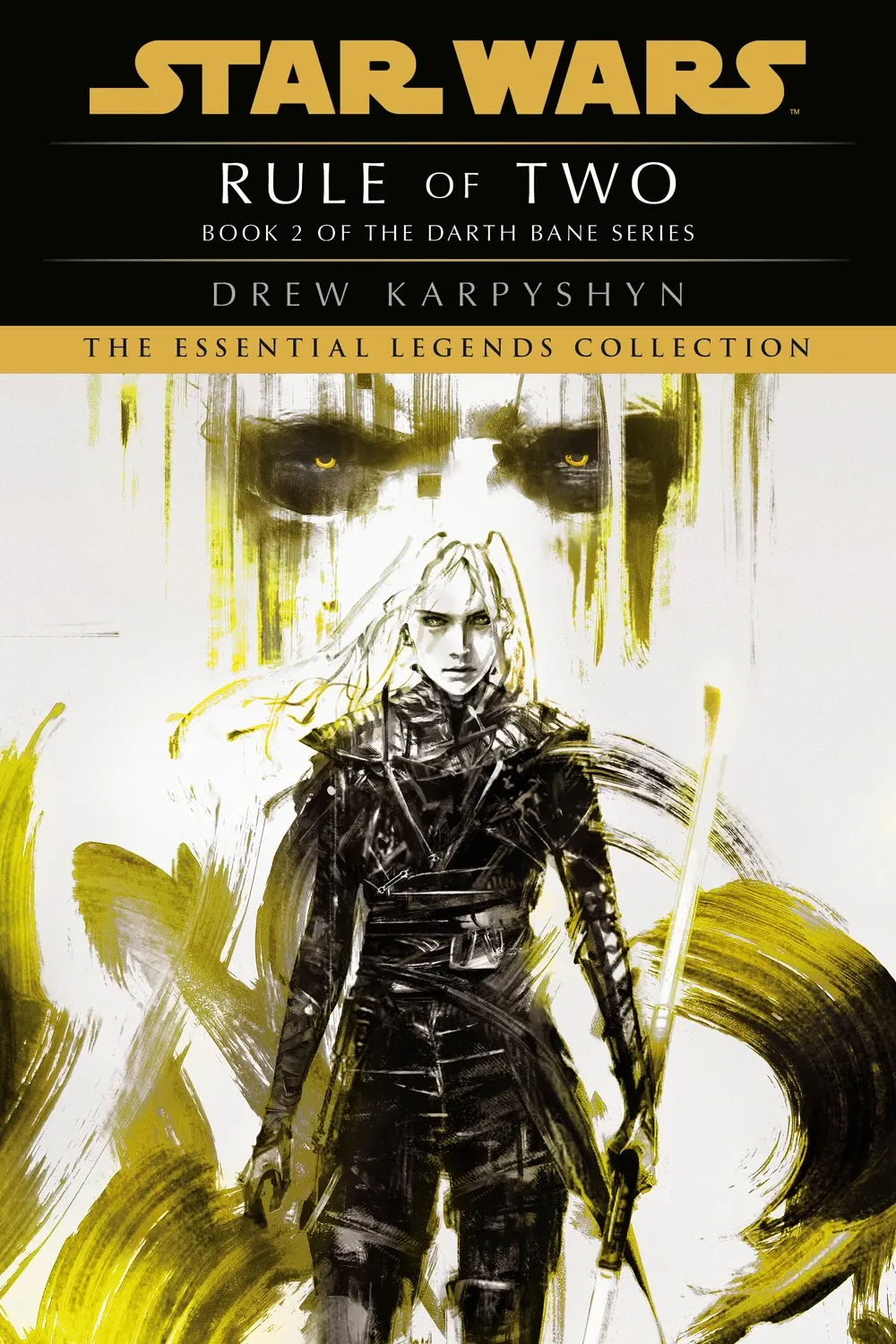
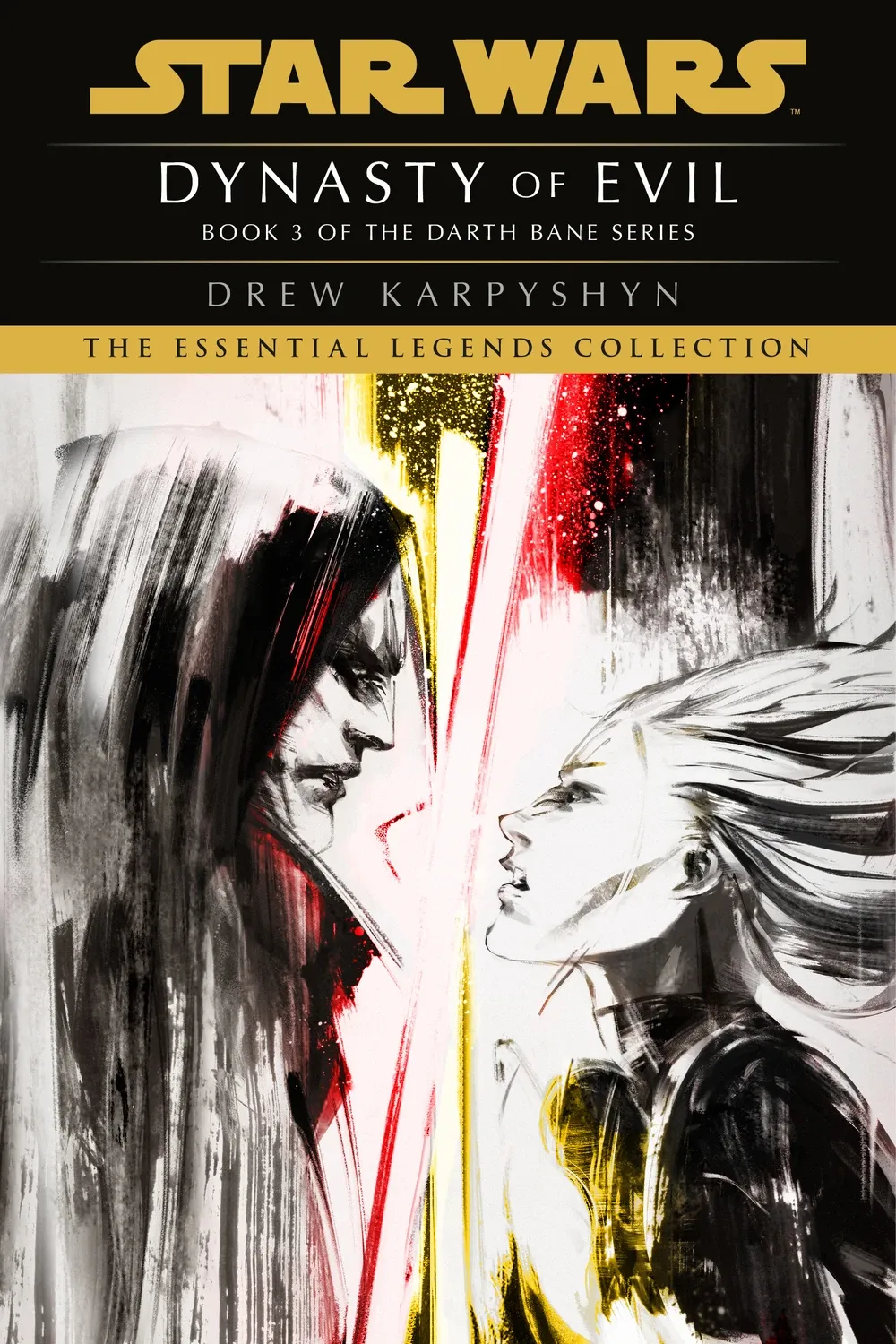
Essential Legends Collection covers for the Darth Bane Trilogy
Recommendation & Rating
The Darth Bane Trilogy is an essential read for anyone curious about the history of the Sith. The first book is the weakest and the second is the strongest. Rule of Two largely works as a stand-alone story, so some readers may wish to start there, then read the other two depending on how they felt about it.
As the books are of varying quality, I will rate them separately:
Path of Destruction
6
/10 — More positive than negative. Has significant failings but is overall an enjoyable experience. A tentative recommendation given.
Rule of Two
8
/10 — Without significant negative worth. Able to be recommended to the interested without reservation.
Dynasty of Evil
7
/10 — With some measurable negative worth, but overall a positive experience. Above average and able to be sincerely recommended.


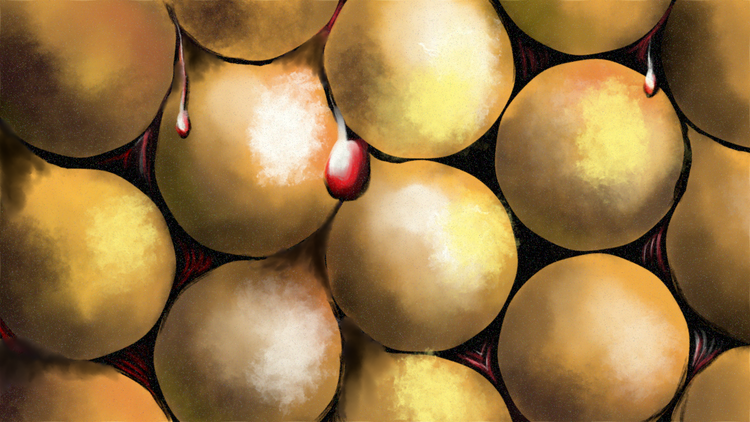
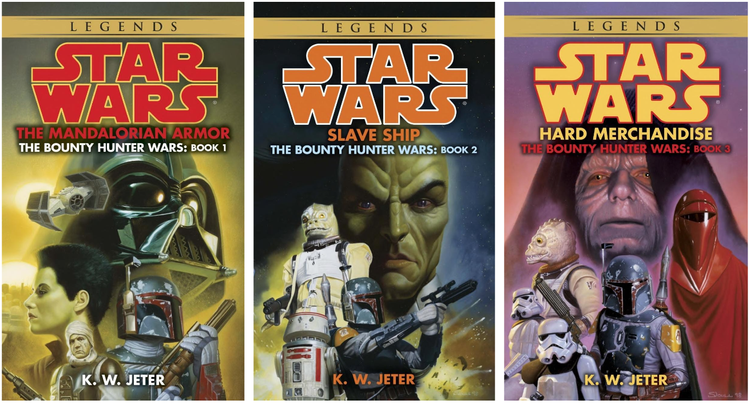


Member Commentary